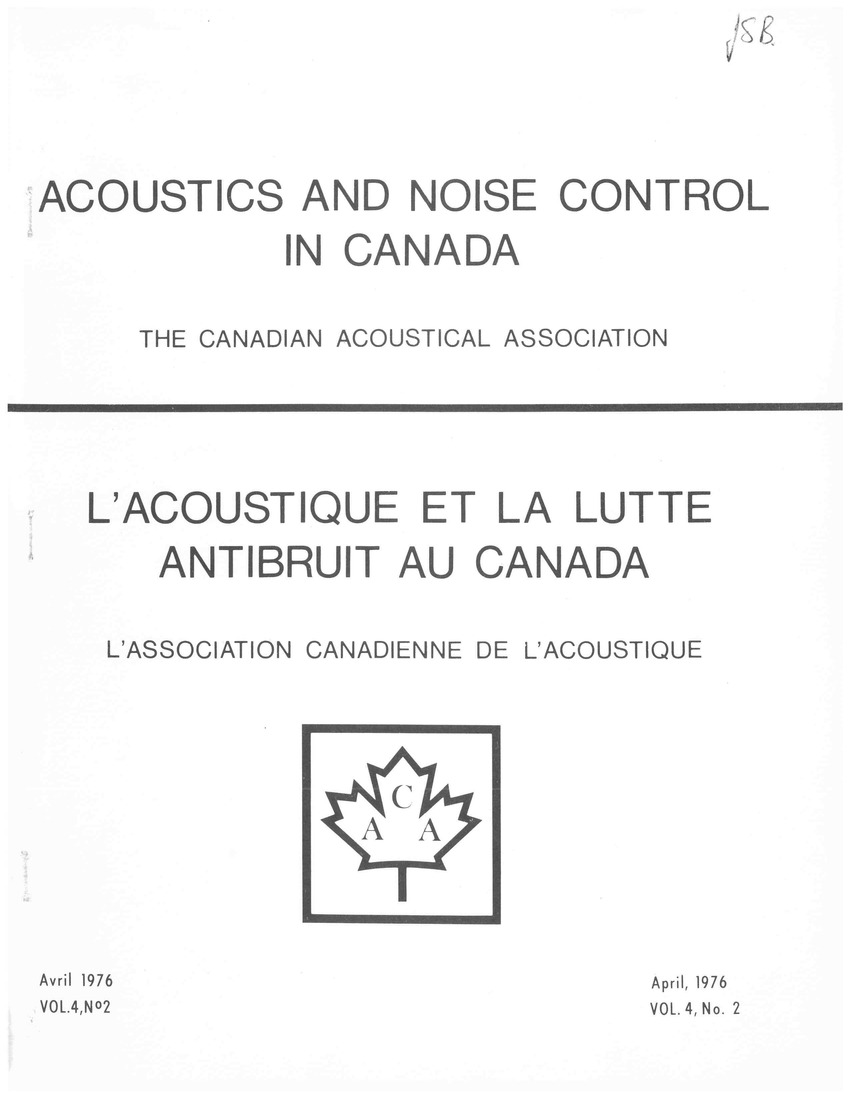Sound Propogation Outdoors
Résumé
In problems of sound propagation outdoors it is usually assumed that the ground is infinitely hard, and that sound from a point source spreads in the space above the ground according to the inverse square law. At large distances molecular absorption plays a significant role. Because sound levels at ranges greater than a few hundred feet are often 10 or 15 dB less than expected, from the mechanisms so far mentioned, sound levels are often reduced empirically by this amount in prediction schemes and attributed to a "terrain effect", or some such name. Meteorological effects, caused by gradients of wind or temperature are more difficult to allow for, and are often ignored. These gradients and related instabilities also result in turbulence, which causes fluctuations in the sound levels that are quite significant, depending on sound frequency, even a few hundred feet from the source. There is much relevant material in the technical literature that has not yet been applied to the practical problems of outdoor sound propagation; but which can be very significant for such things as the standard testing of motor vehicles or snowmobiles at ranges of 25 or 50 feet, and at longer ranges are important for the prediction of airport or highway noise at distances of a mile or two. Precise mathematical theory of wave propagation in near-horizontal directions over a surface of finite impedance goes back to Sommerfeld in 1909 and was extensively developed by about 1940 at least for electromagnetic waves. The theory was put into acoustical form about 1950 by both Ingard and Rudnick, and the latter also confirmed the main features experimentally in the laboratory. In the last twenty years there have been several experimental studies outdoors, whose principal strength has been the careful reporting of results rather than the discussion of mechanisms. The reasons most of this is not yet applied are twofold: firstly the scarcity of measurements of ground impedance particularly for the near-grazing angles of incidence that are of practical importance; and secondly the complexity caused by several phenomena that usually coexist, although sometimes one or another can predominate. This paper briefly summarizes some of this un-applied experimental knowledge, with a view to replacing parts of the present widely used empirical prediction methods by more quantitative schemes.Fichiers supplémentaires
Publié-e
Comment citer
Numéro
Rubrique
Licence
Author Licensing Addendum
This Licensing Addendum ("Addendum") is entered into between the undersigned Author(s) and Canadian Acoustics journal published by the Canadian Acoustical Association (hereinafter referred to as the "Publisher"). The Author(s) and the Publisher agree as follows:
-
Retained Rights: The Author(s) retain(s) the following rights:
- The right to reproduce, distribute, and publicly display the Work on the Author's personal website or the website of the Author's institution.
- The right to use the Work in the Author's teaching activities and presentations.
- The right to include the Work in a compilation for the Author's personal use, not for sale.
-
Grant of License: The Author(s) grant(s) to the Publisher a worldwide exclusive license to publish, reproduce, distribute, and display the Work in Canadian Acoustics and any other formats and media deemed appropriate by the Publisher.
-
Attribution: The Publisher agrees to include proper attribution to the Author(s) in all publications and reproductions of the Work.
-
No Conflict: This Addendum is intended to be in harmony with, and not in conflict with, the terms and conditions of the original agreement entered into between the Author(s) and the Publisher.
-
Copyright Clause: Copyright on articles is held by the Author(s). The corresponding Author has the right to grant on behalf of all Authors and does grant on behalf of all Authors, a worldwide exclusive license to the Publisher and its licensees in perpetuity, in all forms, formats, and media (whether known now or created in the future), including but not limited to the rights to publish, reproduce, distribute, display, store, translate, create adaptations, reprints, include within collections, and create summaries, extracts, and/or abstracts of the Contribution.


